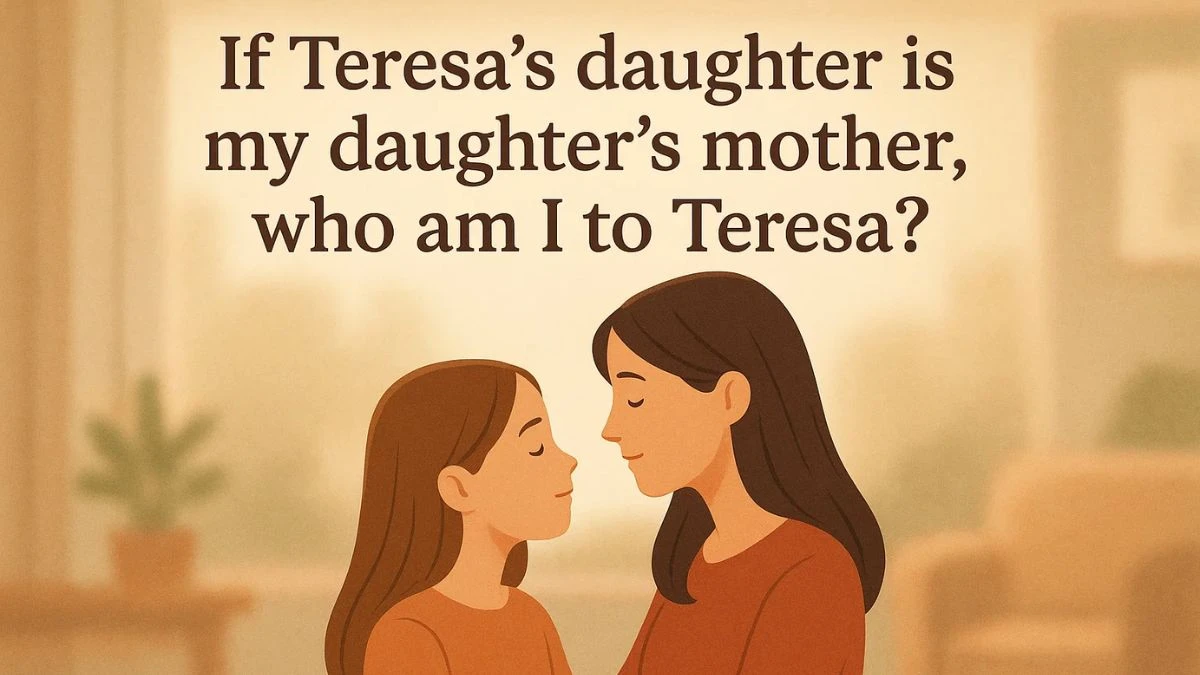If Teresa's Daughte Riddle Answer Explained
Riddles that ask clever questions about family relationships often stump even the sharpest minds. One that has recently caught a lot of attention is:
If Teresa's daughter is my daughter's mother, who am I to Teresa?
Let's break down the riddle, understand the logic, and see how to solve it step by step.
Breaking Down the Riddle
The riddle gives you a circular relationship:
"Teresa's daughter is my daughter's mother."
Let's try to unravel it by substituting phrases:
-
Let's call the person speaking "Me."
-
"My daughter's mother" — Who is that to "Me"?
-
It is Me, because the mother of one's own daughter is oneself.
-
So, "Teresa's daughter is Me."
Rewriting the riddle:
Teresa's daughter is me.
Who am I to Teresa?
Solving the Riddle
The key lines from before now read:
- You are Teresa's daughter.
Therefore,
- Your relationship to Teresa is: You are Teresa's daughter.
So the answer is:
I am Teresa's daughter.
Extended Explanation
In riddles like this, replacing the words with actual relationships can clarify things:
-
Let’s say Teresa has a daughter named Anna.
-
Anna has a daughter (Anna's daughter).
-
Anna is "my daughter's mother." If I'm "my daughter's mother," I'm Anna.
So, if you are the narrator:
-
"Teresa's daughter is my daughter's mother” — you must be Anna.
-
Therefore, you are Teresa's daughter.
Why This Riddle Is Tricky
These types of riddles play with language and indirect references:
-
They make you think the relationships are more complicated than they really are.
-
By using possessive nouns in reverse, it sometimes throws off the listener.
The logic trap is in “my daughter’s mother” — most people first focus on the daughter, but “my daughter’s mother” is just myself.






